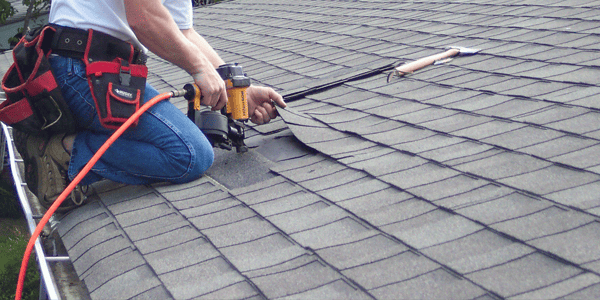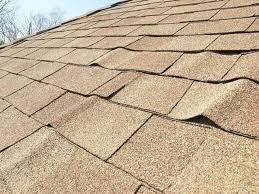There comes a time in every homeowner’s life when they’ll need to perform a major piece of home improvement, whether that’s getting new siding, pouring new concrete for their driveway, or getting a full roof replacement.
Maybe you’ve noticed some of the following on your roof:
- Frequent and widespread leaking
- Sagging
- Mold or mildew growth
- Missing or torn shingles
It can be tempting to perform endless repairs on your roof, but these signs mean that it’s time to ditch the repairs and get a replacement instead.
When scheduling the best time for your roof replacement to take place, you might catch yourself wondering, “How long does it take to replace a roof?
The answer, it turns out, depends on a few key factors, including the size of your home, the materials you use, and whether you go with a professional roofing crew or attempt the repairs on your own. Below, we provide estimates based on all these factors to help you determine your replacement timeline.
The Roof Replacement Process
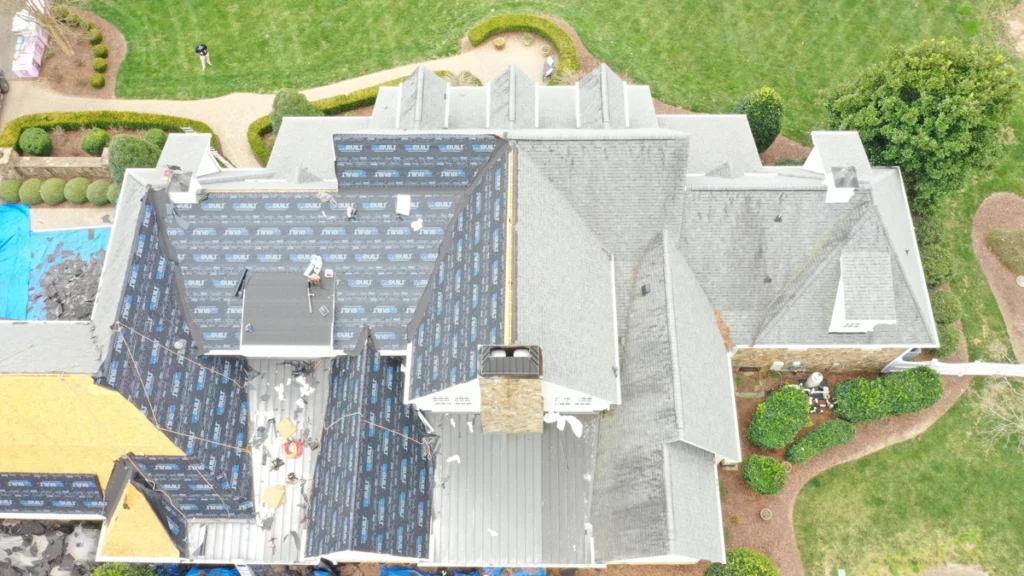
Whether you work with a roofing company or opt to perform the replacement yourself, you’ll need to follow these steps for your roof replacement process:
- Roof inspection: This is the initial review of your roof that either you or your contractor will perform. The findings from this inspection help you determine the exact scope of the project.
- Ordering materials and supplies: Based on the findings from your inspection, order the materials you’ll need for your roof replacement. This includes things like shingles, roofing paper, underlayment, a drip edge, flashing, and roof decking and vents.
- Prep for project day: All the supplies for your project will be delivered to your home, including the new roofing materials and any dumpsters you’ll need for disposing of old materials. These are often placed on your driveway or another dry area with easy access to your roof. You should also cover vulnerable windows with plywood and remove solar panels and satellites from your rooftop.
- Protect your property: On the day of your roof replacement, make sure there are no cars in the driveway and that all the landscaping immediately surrounding your home is covered and protected with tarps. Move all outdoor furniture as far from your home as possible. It can also be a good idea to lay out tarps to cover the belongings in your attic.
- Tear out old materials: You’ll tear out all the old materials from your roof, including the upper layer (asphalt shingles, metal panels, etc.), underlayment, and flashing. You may also need to tear out your roof decking if you find rot or other signs of damage. All these materials will get tossed over the side of your roof and onto tarps or into the dumpster.
- Install the new materials: You’ll lay down the new material, starting with the underlayment and drip edge and moving to the roofing material itself. If necessary, install new vents, flashing, and gutters.
- Wrap up the project and dispose of waste: Finally, your gutters will need to be cleaned, and all debris and tarps will be removed from your property. The waste should be taken to a proper disposal site. Move your vehicles and outdoor belongings back to their original spots.
- Final inspection: If you work with a contractor, they’ll do a final walkthrough of your roof to make sure nothing was missed and that your roof is good to go!
How Long Does It Take to Replace a Roof?: The DIY Version
When you need a new roof fast, you might be tempted to take on the work yourself. After all, there are some obvious benefits to doing a roof replacement on your own:
- You’ll save money on labor costs
- You’ll have complete control over the project
- You’ll be able to get it done on your own timeline
However, a roof replacement is about more than just the physical act of installing the new roof. Keep the following things in mind when determining how long your project will take.
Materials You’ll Need ⚒️
When you hire a contractor to replace your roof for you, they come with all the people, tools, and materials you’ll need for a total roof replacement. When you decide to put on a new roof yourself, you’ll need to source all of these yourself. Make sure you have these items before you begin:
- Tarps to protect your property
- The roofing materials themselves (roofing paper, roof sheathing, metal fasteners, roofing caulk, ridge vents, etc.)
- A dumpster for getting rid of the waste
- A magnetic tool to pick up nails from your yard
- Safety materials, like a harness, to anchor yourself to your roof
- Wearable protective gear like gloves, eye protection, and long sleeves
- A sturdy ladder
Required Expertise 🎓
You should never attempt to replace your own roof without specific knowledge of this kind of roofing project, including prior professional experience in the roofing industry.
In addition to understanding how to work with a roof of your specific pitch and the materials you want to use, you’ll also need to know how to properly ventilate your roof and identify signs of damage in your roof decking and gutter system. If any precipitation comes up during your replacement project, you should also know how to tarp your roof to prevent leaks.
If you install your roof incorrectly, it could spell disaster for your finances. At the very least, you’ll need to call a roofing company to come and fix the work you did. At worst, you run the risk of causing damage to your roof or home, and your insurance company will be unlikely to pay for it.
Safety Precautions 🦺
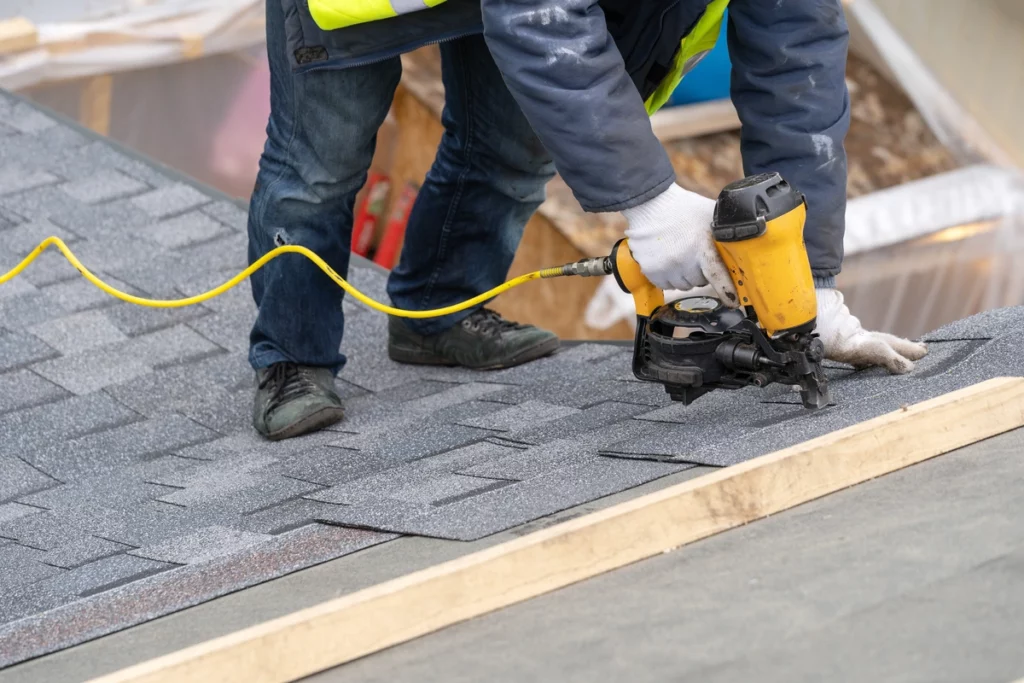
Don’t try to install a new roof on your own; always have at least one person around to help you out. Use a sturdy ladder and anchor yourself to the roof if you can. Never try to complete a roof replacement in high winds or while the roof is wet.
Keep the safety of everyone on the ground in mind as well. Warn any occupants of the building when you’ll be doing the demo, as it’s difficult to see over the edge of the roof when you’re throwing old materials down. Keep an eye out for mailperson, delivery people, and general passersby on the sidewalk if you don’t have much clearance between the edge of your roof and the sidewalk.
Factors That Affect Your Anticipated Timeline 🕜
All in all, if you’re determined to replace your roof on your own, budget at least a week to install asphalt shingles, and leave more time for other kinds of roofing. Remember to factor in the time it will take to set up and tear down before and after the project. Having a qualified helper or two can keep the project timeline from extending further than a few weeks.
If you anticipate getting any precipitation during your project dates, this will also extend the timeline, as you’ll need to have dry conditions to continue with the roofing.
How Long Does It Take With a Professional Roofing Contractor?
With a professional roofing contractor, you can expect the average asphalt shingle roof installation to take a day or two, including set up before and clean up after. Metal and tile will have the longest timeline and could take up to two weeks to install.
Why does a roofing project go so much faster with a professional roofing crew? First, roofing companies can bring a crew of four to five people to work on a residential roof, meaning that they can complete some tasks simultaneously that would take you a lot longer to complete on your own.
Additionally, roofing professionals work day in and day out in this business. They have all the latest information about the building codes and permits that apply in your area and can make sure that everything for your roof replacement project is in compliance with local ordinances.
They also take care of all the logistics for you, including:
- Ordering supplies
- Having the dumpster delivered to your house
- General project management
As long as you’re around to give them access to your roof and your attic on the day of your project, you don’t have to worry about much else.
Working with a professional roofer could expedite your insurance claim process, if this is applicable to your situation. While they can’t actually do it for you, they’ll likely have some words of wisdom about navigating the insurance system. Plus, their inspection and estimate make for great supporting evidence when submitting your actual claim.
Finally, roofing contractors are often licensed directly by manufacturers, meaning that you can rest assured that they know exactly how to work with the materials that’ll be used for your installation. There should be no delay because of inexperience with the kind of material you want to use for your roof.
Factors That Can Extend the Timeline
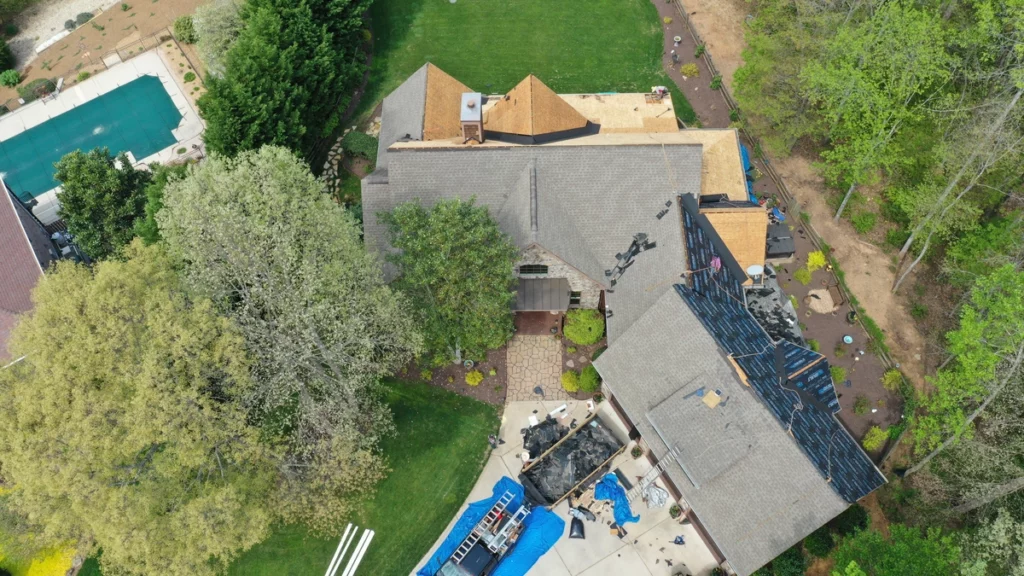
Just like with a DIY roof replacement, some factors may mean it takes a professional a bit longer to replace a roof. They won’t work in inclement weather or after dark, so the presence of rain or working in the winter months will extend the project timeline. Additionally, if they find rotten roof decking that they didn’t anticipate, you may need to wait a few days for them to order the appropriate materials and install them on your roof before they can continue.
Roof Replacements Done Right
As you can see, there are several factors that go into answering the question, “How long does it take to replace a roof?” From the number of people involved to the kinds of materials you plan to use, a roof replacement is a complicated process with many considerations at play.
Most homeowners aren’t qualified to complete a roof replacement on their own and need a roofing team that they can call to provide them with high-quality roofing services. At Tidds Roofing, we go above and beyond to give you the best service possible. From our initial meeting through project completion, we’re here to help.
Ready to hear how we can help with your roofing replacement? Talk with our team today!
